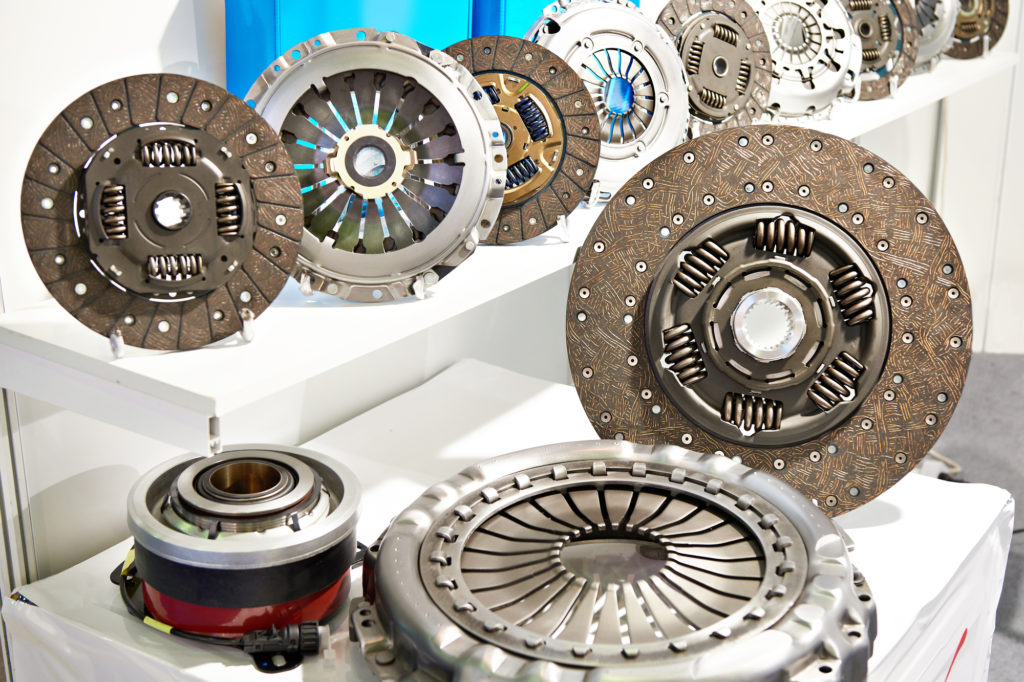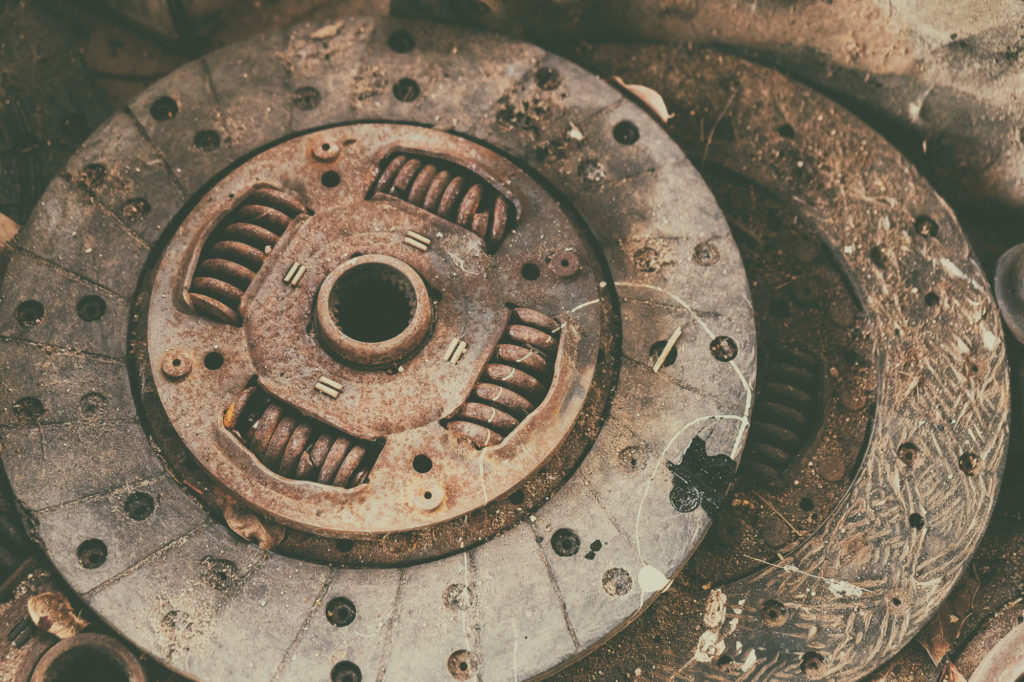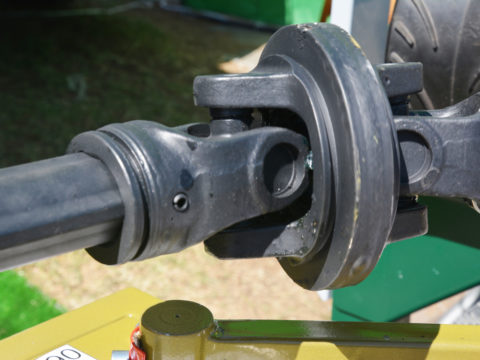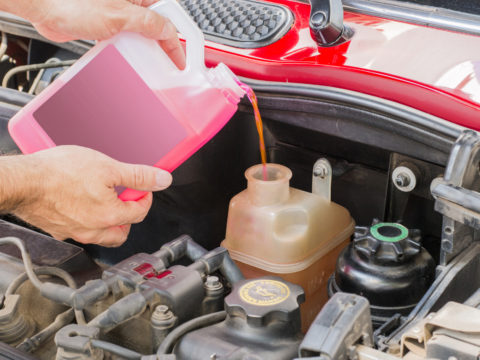A clutch is what allows any vehicle to transmit its rotation power in the engine to the wheels. This means that the power generated by the engine can run at all times without being directed into turning the vehicle’s wheels at all times.
A clutch pressure plate is a part that lets the energy in the engine crankshaft make its way to the driveshafts and the wheels. So, you can think of the clutch pressure plate as a mediator in the whole transmission process.

Contents
Two Types of Clutch Pressure Plates
The two main types of clutch pressure plates are the long style and the diaphragm style.
The long style features nine springs and three levers. In contrast, the diaphragm style features one type of spring that is a Bellville style. The former is typically used in racing, whereas the latter is better for street driving. However, there are more nuanced differences between the two, which a mechanic will be able to identify.
Four Symptoms and Causes of a Bad Clutch Pressure Plate
Let’s now go over some symptoms and causes often associated with clutch pressure plates going bad. An old pressure plate will look worn down or perhaps rusty, but the most reliable ways to figure out its status are to pay attention to how it performs.
1) Shakes/Vibrations When the Clutch Is in Use
When you’re driving, if you disengage the clutch and experience a series of shakes or vibrations that feel strong, this is a potential sign that something is wrong with your vehicle’s clutch. The clutch should always feel relatively smooth when you use it, so you can easily detect any jitteriness.
For this specific issue, you should seek out assistance from a professional rather than finding and carrying out a fix on your own. This is because the problem might not directly relate to the clutch in some cases, so it is better to get a professional’s opinion rather than guessing yourself.
2) Trouble When Switching Between Gears
Switching gears is an essential part of driving any vehicle, and being able to switch gears cleanly is something that a properly functioning clutch will allow you to do. However, suppose your vehicle’s clutch is not working correctly. In that case, you’ll pick up on the hiccups that happen when you go to switch gears, especially if you’re a seasoned driver.
Upon applying pressure to the pedal, if you feel that the clutch does not fully disengage, that likely means something is wrong with the pressure plate.
Do note that low amounts of transmission fluid are another potential cause of gear shifting issues. So, ensure that your vehicle has adequate transmission fluid before assuming that a damaged clutch pressure plate is the issue.
3) Loud Squeaks, Groans, and Other Noises Come From Using the Clutch
Similar to vibrations and jerkiness, if you hear squeaking, groaning, or other sounds when using the clutch, that is not a good sign. Typically, those kinds of noises mean that something is putting stress on your vehicle, so it is essential to identify the cause of the noises quickly.
Most commonly, audible symptoms are a sign that the clutch pressure plate is experiencing issues or some other piece of the clutch system is malfunctioning. Those sounds might also mean the clutch itself is experiencing issues from age and lots of usage, in which case the clutch pressure plates may not be the problem at all.
4) Loose Clutch Pedal
A loose clutch pedal is the easiest to detect from all the possible symptoms of a bad clutch pressure plate. That said, fixing a loose clutch pedal requires you to go down to the nuts and bolts that make the pedal work, as the issue might result from something as simple as a couple of screws being loose or potentially something more complicated.
So again, seeking the help of a professional is the best course of action. After all, the last thing you want to do is start messing around with the system’s springs and accidentally make an already bad situation worse!
How to Test a Clutch Pressure Plate
The best way to test a clutch pressure plate is to check for any symptoms discussed above.
It may sound simple, but you don’t need to go out and buy any advanced testing kit or some piece of equipment to test your clutch pressure plate.
Instead, get in your car and drive around at an average speed. Try shifting gears and see if you hear any sounds or feel any jerkiness during the process. If you do, then as mentioned in the symptoms and causes section above, you can more often than not assume that something is wrong with the clutch pressure plate.
Suppose you test the clutch pressure plate for the common symptoms of malfunctioning and yield no results but still feel that something is wrong. In that case, you should seek help from a professional before doing anything further.
How to Fix a Clutch Pressure Plate
Next, let’s go over some different methods to fix a clutch pressure plate.
Adjusting the Clutch Pressure Plate
To adjust a clutch pressure plate, you will need a wrench, a straightedge, a scale, and the manufacturer’s service manual for the vehicle.
With the wrench, straightedge, and scale, you can adjust the pressure plate’s screws directly and reach the right amount of clearance between the actual plate and the straightedge. However, you will need to consult the manufacturer’s service manual to determine the proper clearance.
After that, you can then measure the height of the pressure plate release levers by loosening and turning the locknuts. As with the first adjustment, you can use the service manual to determine the correct release lever height. Once complete, don’t forget to retighten the lock nuts.
Cleaning the Clutch Pressure Plate
For cleaning the clutch pressure plate, you can use acetone or lacquer thinner and a towel or old rag to remove any contamination on the plate.
Just be sure your hands are nice and clean for the process and do not bring any grease or oil near the plate surface. Otherwise, you’ll risk contaminating the plate further if it is already dirty.
Replacing a Clutch Pressure Plate
The process of replacing a clutch pressure plate is very involved and not something that you should attempt on your own without extensive knowledge of how clutches and clutch pressure plates work.
If you think that your clutch pressure plate needs a replacement, contact a professional to handle the replacement for you.
Resetting a Clutch Pressure Plate
Like replacing a clutch pressure plate, resetting one is another task you should leave to the professionals.
There are a few different ways to reset a clutch pressure plate if it is a self-adjusting pressure plate. However, it involves going down to the nuts and washers of the plate and working with numerous springs.
A machine shop will have the means to do the reset for you, and the cost will not be expensive, though the price may vary depending on the shop you go to and the type of vehicle you have.

FAQ
Here are a few questions you may still have about clutch pressure plates and parts related to them.
How to Tell If You Need a New Clutch
The easiest way to tell if you need a new clutch is to look for symptoms of it not functioning properly. If you find any of the symptoms covered above, take it to a shop and get a professional opinion on it before deciding on whether or not a new clutch is needed.
Oftentimes, a clutch is salvageable, but there are also many instances where some damage will leave it beyond repair.
How Long Does a Clutch Pressure Plate Last?
The lifespan of a clutch pressure plate tends to vary based on many variables.
Sometimes they can die before a vehicle hits the 30,000 miles milestone. Other times they can last up to 60,000 miles, and if they are well managed and not overused, they can survive until 100,000 miles.
There is not a set amount of miles that you can expect every clutch pressure plate to last. Still, generally speaking, there is no reason why one can’t last upwards of 60,000 miles if it receives proper care.
How Much Does It Cost to Replace a Clutch Pressure Plate?
Usually, replacing a clutch pressure plate comes with replacing whatever clutch parts are damaged. Combine that with the added cost of labor from a professional, and the prices for a replacement often go into the hundreds.
Can You Resurface a Clutch Pressure Plate?
No, do not resurface a clutch pressure plate! It is technically possible, but the number of issues it would create with the pressure plate itself, and the flywheel makes it a highly unrecommended practice.
What to Do When the Clutch is Slipping When Accelerating?
If you notice that your clutch is slipping, stop driving as soon as possible.
Driving with a clutch that is slipping is dangerous for many reasons. The issue will only worsen with time, so make plans to take it to a repair shop to get the clutch fixed or replaced.
What Is the Difference Between a Clutch Plate and a Pressure Plate?
The clutch plate sits between the flywheel and the clutch pressure plate. It is the part of the clutch system that helps the clutch shaft make rotations through the splines. This differs from the clutch pressure plate, which serves the purpose of allowing the engine crankshaft’s energy to move to the driveshafts and the wheels.














